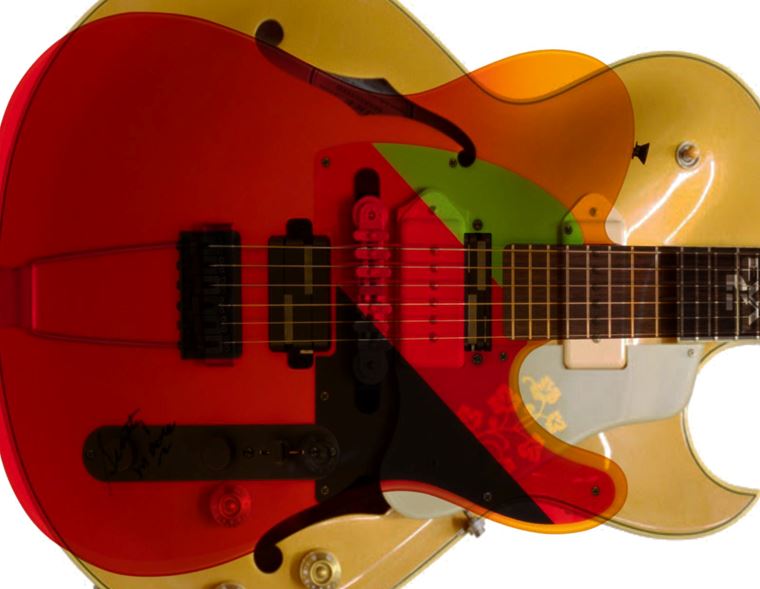Guitar Pickups Explained
Published on 05 October 2022
Pickups are a big subject. For beginners, there’s a lot of mystery surrounding what they are, what they do and how they affect your sound. For experienced players, there’s a whole world of minutiae regarding magnets, windings and pole pieces that can drag us quite deeply into anorak territory! Such an important subject requires a clear, concise and straightforward explanation, then, doesn’t it?
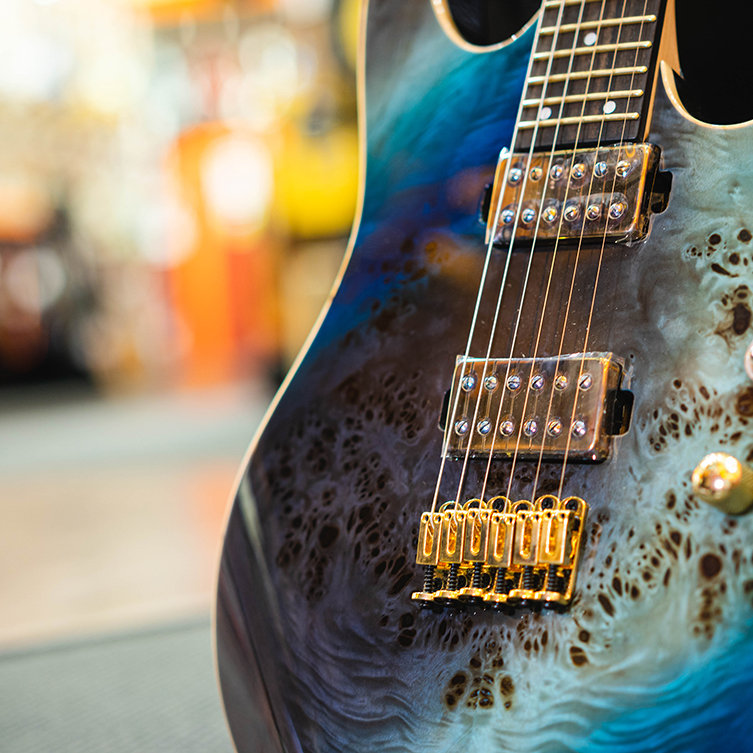
Well, we’ll endeavour to provide just that for you today. We’ll briefly cover what a pickup actually is, and then we’ll look at what’s out there in terms of electric guitar pickup varieties. We’ll mainly refer to guitar pickups over bass pickups since the principles will be largely the same for both. Where there’s an area that is more directly bass-related, we’ll cover it from that angle too. Sound good? Then let us begin.
Contents
- What is a Guitar Pickup?
- Single Coil Pickups
- The P90 Pickup
- Humbucker Pickups
- What is a PAF Pickup?
- Wide Range Humbuckers
- High Output Humbuckers
- Active Humbuckers
- Split Coil P-Bass Pickups
- Coil Taps and Coil Splits
- Handwound and Scatterwound
- Piezo Pickups
What is a Guitar Pickup?
Let’s get that dealt with right off that bat: just what is a guitar pickup? Put simply, a pickup is a device made up chiefly of a magnet and copper wire, and its job is to capture the vibrations of a guitar string (to ‘pick it up’, so to speak) and turn it into an electrical signal before sending that signal to the instrument’s output and thence onto whatever pedals and/or amps are connected.
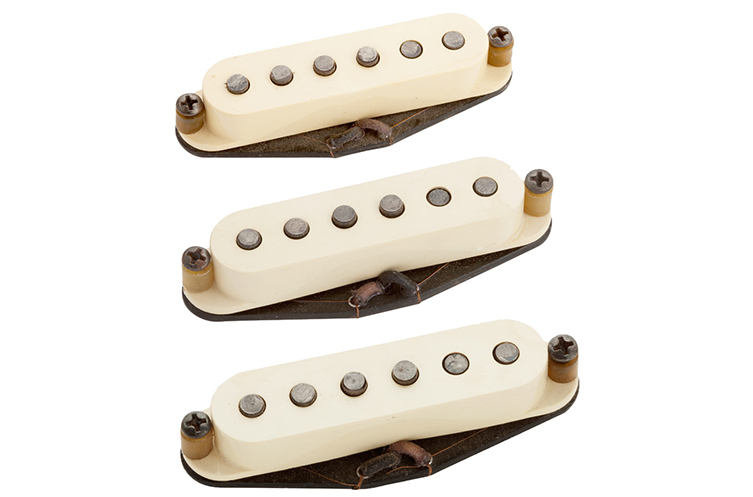
Right, let’s zoom in a little bit, shall we? We’ll take the Fender Stratocaster’s single coil pickup as our example here, since it’s something that almost all guitarists will be at least somewhat familiar with. The single coil pickup uses a length of copper wire, which acts as an inductor for the signal. This wire is wound around a set of magnets, referred to as pole pieces. There are six of these pole pieces, one sitting directly below a guitar string. The pole piece has a magnetic field, which is disturebed, for want of a better term, by the movement of the string above. Some science-types point out that the string itself acts as something of a magnet, and that it’s magnetic flux that causes the ‘disturbance’. This is slightly too Egon Spengler-like for us, so suffice to say, the magnet (which can be made from a variety of materials) picks up a signal from the string.
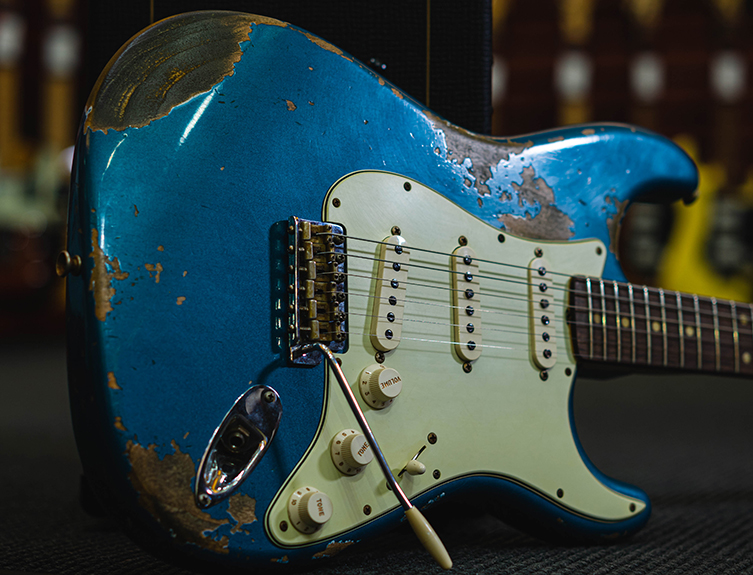
In fact, let’s quote Seth Lover, the world’s leading pickup pioneer who invented pickups for both Fender and Gibson on the golden age of the 50s till the 70s:
“…...the magnetic field comes up to the strings there and magnetises the strings. That’s one of the things that most people don’t understand. They figure that string is waving there and cutting the magnetic lines of force. Nuts. That isn’t it. The magnet, all it does is magnetise the string. Now you’ve got a waving magnetic field. And we have a fixed coil with a waving magnetic field to induce voltage. If you want to, take the magnet out. Once you’ve magnetised your strings, it will play until the string loses it. Players think the string, the magnetic field from the magnet, comes up to the string and by twisting the magnetic flux back and forth that’s what induces the voltage. That’s not what happens."
(Seth Lover, from a 1978 interview with Seymour Duncan)
Okay! Let’s face it: Seth knows best!

So, the copper wire is wrapped around some type of magnet (well, it’s wrapped around a bobbin and the magnets sit within that), and the magnets work with the string to create a field that is then picked up by the copper wires and sent to the output. Magnets are often made from a composite metal called alnico, which is an alloy of ALuminium, NIckel and COpper. These are then graded into roman numerals, with II, IV and V being the most prevalent. Roughly speaking, alnico II is warmer and alnico V is brighter. Ceramic magnets are also used a lot, particularly for higher output pickups, which we’ll read about soon. Magnets can be individual pole pieces, like with a Stratocaster’s single coil pickup, or as a bar that sits under or within the pickup like a Les Paul’s humbucker. Both are there for the same job, but these differing designs produce different results.
Pickup Types
So that’s how pickups work generally. Now, let’s discuss the different types available, along with which guitars have historically used them, and we’ll throw in some famous examples of these pickups in action!
Single Coil Pickups
The single coil pickup is where it all started, and it’s still one of the main designs. Single coil pickups were found on all original Fender designs from the 50s and early 60s. Gibson responded with the P90 pickup, which we’ll get to soon, but for now, it’s the straight up single coil styles we’re interested in.
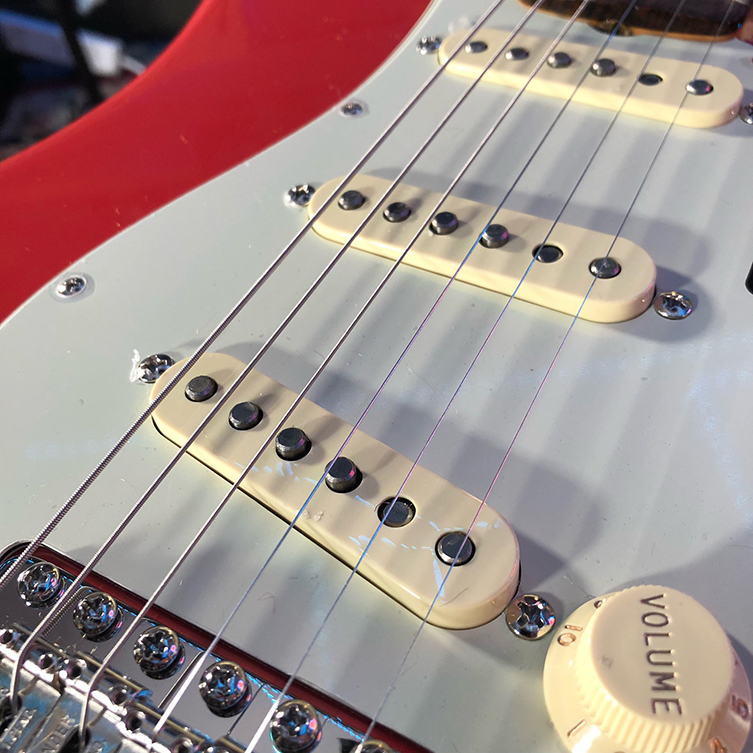
Think of single coil tone and the chances are likely that you’ll think of the Fender Stratocaster. Its clear-as-a-bell, chiming tones are pretty definitive in describing the single coil sound. There are endless examples of beautiful, clean sounding single-coil Strat tone, but we always come back to this one, played on a then-new Fender 1962 reissue Strat:
The Strat may be arguably the best-known single coil sound, but its sister model the Telecaster is hardly far behind. Slightly more muscular in character (and therefore in certain situations more versatile), the Telecaster has a bright attack with stronger sustain than the Strat, and that’s partly down to the fact of the bridge pickup being mounted in a big ol’ sheet of metal! That, and the strings going through the body, as opposed to sitting on top. Plus, with no routing in the body for tremolo springs, the Tele has more solid wood to work with, which all contributes to the overall sound.
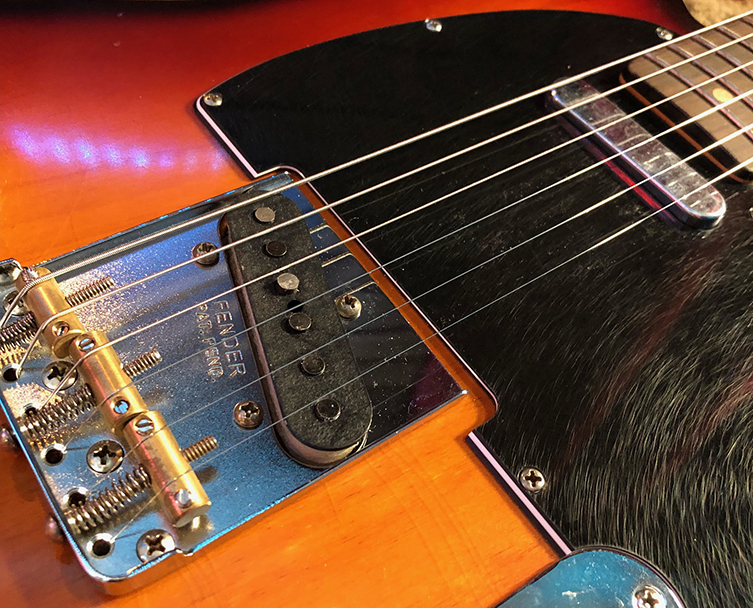
Both of these pickups use magnets for their pole pieces, which are sometimes adjustable in height. Humbuckers differ in this regard, and we’ll hear about those in just a second.
Another style of single coil pickup is the ‘lipstick tube’ pickup, named for reasons that are pretty obvious once you see one! Lipstick tube pickups were prevalent in the 1960s on various ‘department store’ guitars from the likes of Danelectro and Silvertone (Sears’ in-house brand that was, in fact, built by Danelectro anyway), and the resulting tone is bright, chimy and full of jangle.
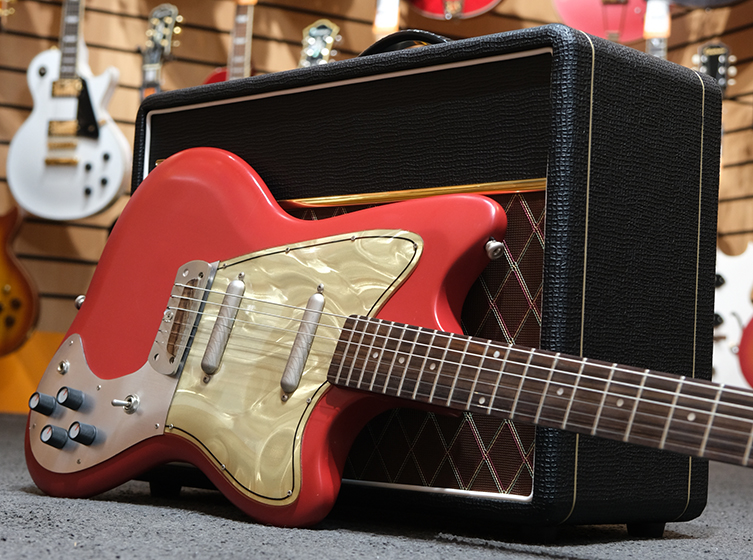
The P90 Pickup
Now, the P90 is a single coil, yes, but the design makes it different enough to warrant its own section. Debuting in 1946, this Gibson pickup was created to replace the ‘Charlie Christian’ single coil that was routinely used on hollow body jazz guitars. Most guitarists became familiar with P90 pickups (also known as soapbar pickups) when they were used on the original Gibson Les Paul guitar in 1952. Since then, that combination of mahogany body, set neck and P90 pickup has produced some of the world’s most beloved guitar sounds. One great example is from Pink Floyd’s Another Brick in the Wall Part 2, where David Gilmour - one of the world’s great Stratocaster players - subbed in a vintage Goldtop Les Paul to play his parts, particularly the guitar solo. Nope, it’s not a Strat!
So, how do P90s differ from typical single coil pickups? Simply, the bobbin around which the copper wire is wound is both wider and shorter than the likes of a Strat. The wires are somewhat further away from the strings, and the resulting tone is generally described as warmer than a typical single coil. In practice, a good P90 kind of sits sonically in the middle ground between a single coil and a PAF humbucker (more about that in a sec), with the ‘cut’ that’s sometimes missing from a humbucker and the body that’s sometimes not present with a single coil.
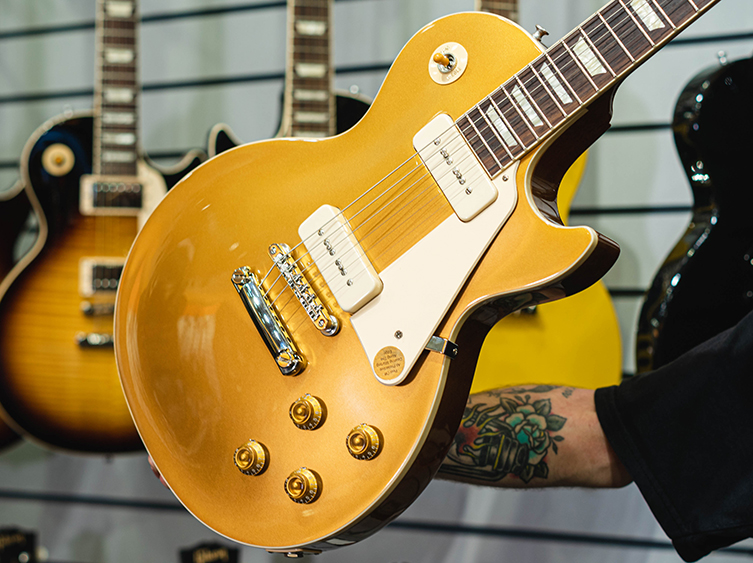
One thing that’s relative to both P90s and standard single coils is ‘hum’. The more gain or overdrive you have in your signal (it’s the same thing after all: input volume that overloads the signal, basically), the more you hear a ‘cycle hum’. Televisions, lights and other electrical gadgets are all picked up by the guitar’s pickup, which acts more like an antenna in this regard. Even amps can set off the hum, as you’ll notice if you move around the room with your single coil-equipped guitar plugged into an overdriven amp. Yes, it can sound pretty cool in a ‘lo-fi lightsaber’ way, but it gets old very quickly!

There are ways to counteract this, though. Judicious use of noise gate pedals can really help, as can simply switching to your amp’s clean channel or turning off your distortion pedal when you’re idling. There are noiseless single coil pickups produced by many brands, including Fender themselves, and other brands like Suhr use extra circuitry in their instruments to stop the hum. Shielding the pickguard (adhesive foil on the back of the guard, where the circuitry is) helps a lot too, but this is not something to be done at home unless you are very confident!
Another thing you can do, of course, is use a guitar with humbucking pickups, but before we get to that, let’s clear up one hotly debated question…
Are Jazzmaster Pickups P90s?
Well, are they? They certainly look similar, but let’s be specific here. No, Jazzmaster pickups are not P90s. How? They are bigger, with wider coils (or rather, the bobbin around which the wire is coiled is bigger, so the windings themselves are bigger) and generally a lower output than typical P90s. P90s, for single coil pickups, are actually quite hot, and this is partly why they work so well with distorted tones. Output is determined by a number of factors, but arguably the number of windings each pickup gets (we’re talking thousands here) plays the largest part.
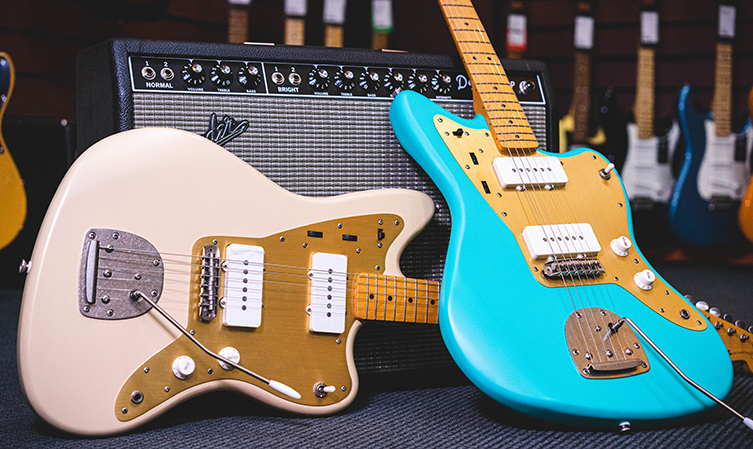
Jazzmaster pickups are similar to P90s, sure, but they are not the same. You can’t fit P90s into a Jazzmaster without getting the hacksaw out, and even if they did fit, you’d quickly hear the difference in tone. Jazzmaster pickups have (generally speaking) more top end sparkle and are closer to Strat and Tele pickups sonically. So, there you have it. The truth!
Humbucker Pickups
Humbuckers are the other main pickup type in the guitar world. Humbucker pickups can look quite different from model to model as well: some appear like two single coil pickups squashed together, whilst others look like big metallic bars of chrome or gold. There are more variants too, but let’s keep things simple! They all share a common build, so let’s check out what a humbucker actually is.
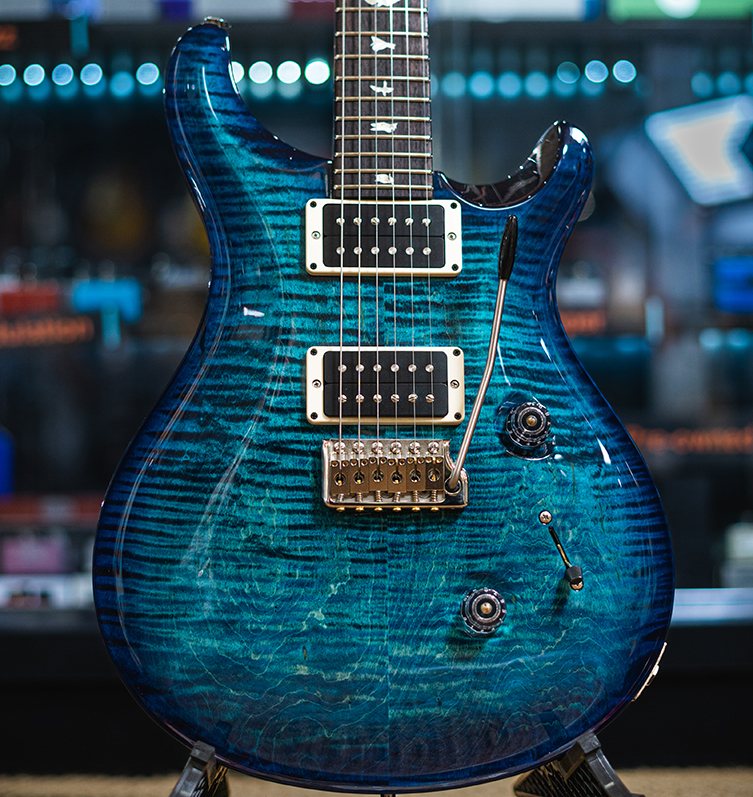
Although humbuckers were around as early as 1953 (made by Rickenbacker, who then abandoned the idea) humbuckers as we know them came around in the mid-50s, designed by Seth Lover in order to counteract the cycle hum we recently spoke about. Lover got around the issue by using two coils, and arranging the magnets within so that one has it’s ‘north node’ up towards the strings and the other north node facing down away from the strings. This arrangement, when connected out of phase, got rid of the hum to a large degree, thanks to phase cancellation.
Humbuckers can be wired in series or parallel (the manner in which the electrical signal travels around the circuit towards the output), though series is the standard way. It increases the signal strength whilst still eliminating nearly all of the hum.
So, some humbuckers are ‘open coil’, meaning that you can see the exposed coils and pole pieces. Some players think there’s extra treble content to be had from their tone if they use open coil pickups, but the jury is somewhat out on that one. You can see an example right here:
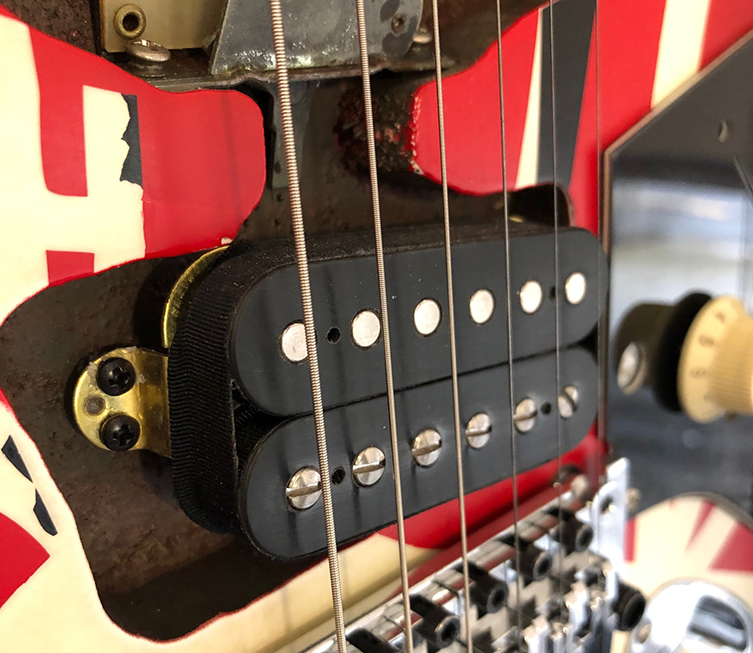
Other humbuckers use covers, which are historically made from metal or plastic. Pickup covers are sometimes thought to offer a warmer sound, but this is also something of a grey area. Gibson PAF pickups were the first examples like this, and are still the main choice for a vast majority of Gibson and Gibson-type guitars.

What does a humbucker sound like? Well, it's hard to pick out just one example, frankly, but here's a famous example of what can be done with a humbucker when it falls into the hands of a pretty good player...
What is a PAF Pickup?
The term ‘PAF’ is routinely uttered by tonehounds as the top of the mountain of tone, as it were. It’s the apotheosis of classic humbucker tone, but what is it? It’s simply the first Patent-Applied-For design of Lover’s from 1955. It’s what was on the original Les Paul Standard guitars from 1957 until 1960, taking over from the P90. PAF humbuckers use alnico II magnets (see earlier) and relatively low numbers of windings to achieve that magical tone. PAF tone is big and warm, powerful and sustaining, yet it has enough cut and chime to be useful for nearly all styles of music. The ‘British Invasion’ music of the 60s was arguably when the world really noticed the sonic charms of the PAF, through artists like Eric Clapton, Jeff Beck and Peter Green.
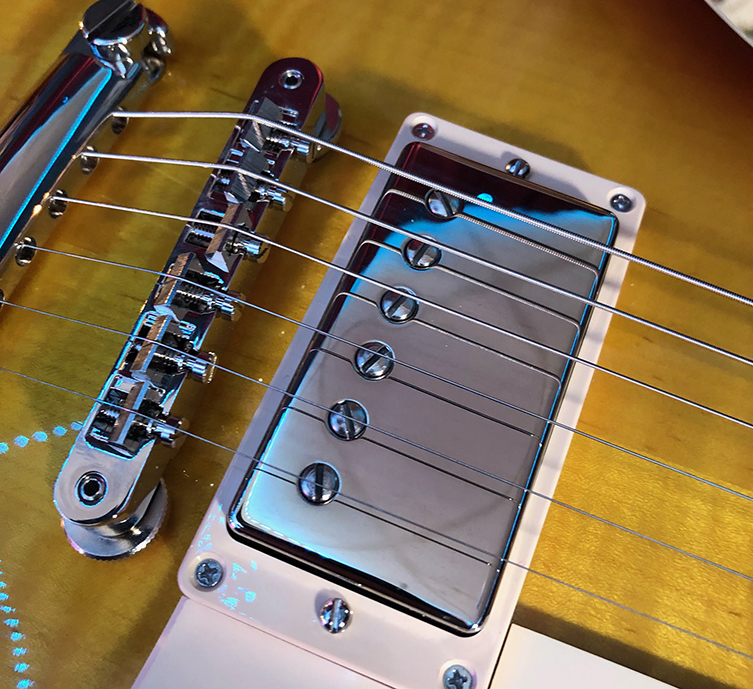
Wide Range Humbuckers
Fender’s Wide Range humbuckers are worth nothing here, too. At a glance, they look like pretty normal humbuckers with metal covers, but under the hood, it’s a different story. Wide Range pickups have magnetised pole pieces, like Strat pickups, and therefore require more winds to achieve a comparable output to a typical humbucker. This results in a sound that, yes, bucks the hum but also retains a lot of that signature Fender tone, making it a unique proposition within the guitar pickup world.
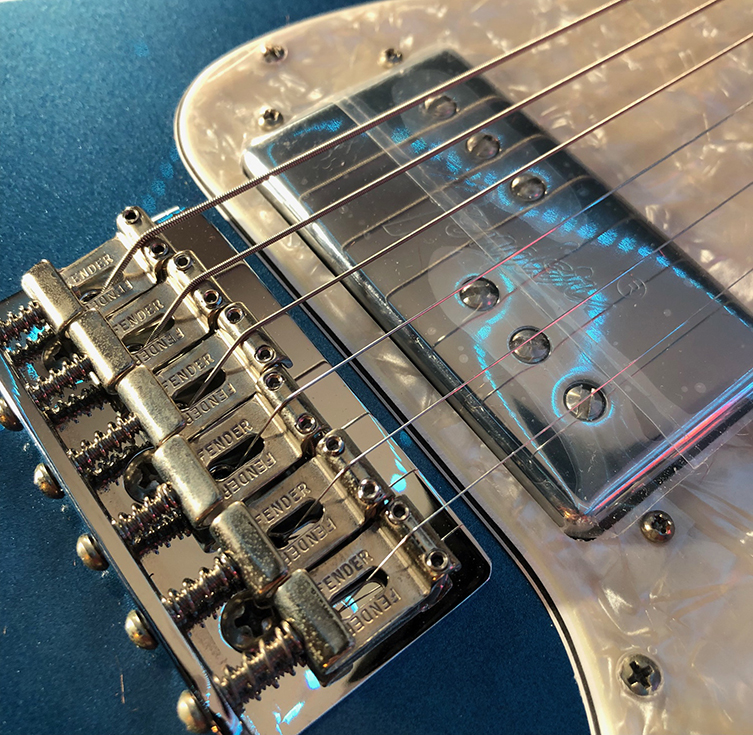
Wide Range humbuckers are wide in more than just the name: they are physically pretty big, to the point where they won’t fit into some guitars as a retrofit! Many third party boutique builders make their own Wide Range-style pickups. It’s also worth knowing that lots of lazy manufacturers make standard humbuckers with Wide Range-style covers. These may look the part but they do not sound the part, and since that’s the whole point of the subject, do exercise due diligence when shopping!
High Output Humbuckers
From the mid 70s, people like Larry DiMarzio and Seymour Duncan began building and selling aftermarket pickups that answered a need in the market for ‘hotter’ pickups. Players wanted more volume, more gain and a generally bigger sound, so pickups were developed to drop into a standard instrument and supercharge it.
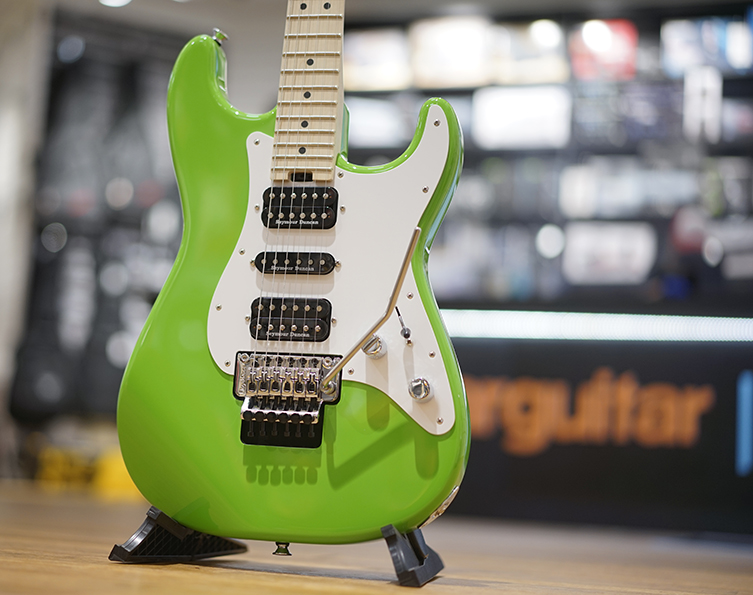
So, what does ‘high output’ mean? Just that, really: the pickup pushes more signal from the guitar to the amp, making a louder, more distorted sound. Higher output is achieved from pickups in a number of ways, including magnet selection (ceramic is a popular choice here) and increased windings of copper wire. Output is often measured by DC resistance, though this actually isn’t a measure of output and therefore is only a rough guideline. Still, a humbucker with a DC resistance of 16k ohms is far higher in output than a PAF pickup with a 7.8K ohm output. There are so many variables involved with measuring a guitar’s ‘output’ that basing everything on this one piece of data is maybe a little misleading. As a guideline, though, it’s a useful shorthand.
Active Humbuckers
If you need your sound to be heavier than a lead anvil at the bottom of the darkest ocean, then you need to know about active pickups. The most famous brand in this category is EMG, whose black plastic covers are as iconic as the sounds they produce. That said, most major brands offer at least one type of active pickup in their catalogue.
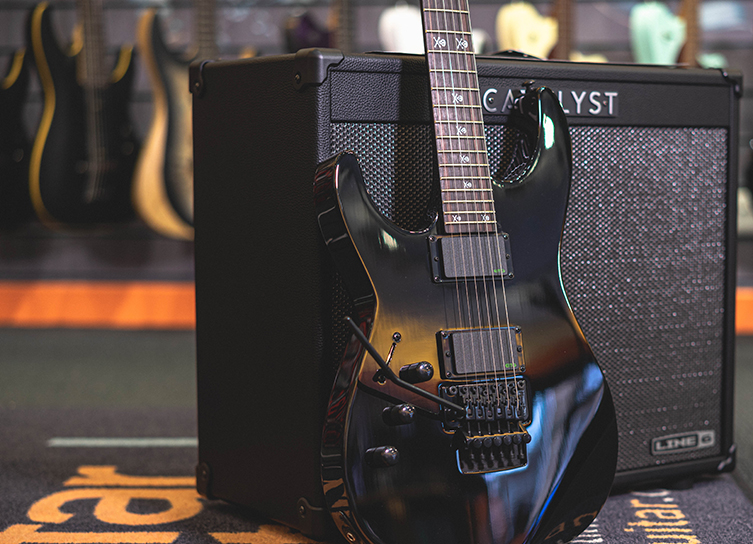
So what makes them different? In a nutshell, they use their own power source (normally a 9v PP3 battery or similar, located onboard the guitar itself) to provide an enormous amount of output, whilst keeping the background noise levels extremely low. Active pickups use their own circuitry, so you can’t just swap in an EMG, say, on an otherwise passive (i.e. normal) guitar, since the circuits for one type of pickup won’t work on another.
Active pickup users get very good at remembering to remove their instrument cable from their guitar’s input when they aren’t playing, because plugging a cable in is effectively an ‘on’ switch! Left in the guitar, the power will just dwindle, and dead batteries just don’t sound as good, frankly.
Today, brands like Fishman offer pickups that can be recharged via conventional USB, making them very handy indeed. Active pickups are not often the first choice for ‘vintage’ tone, but metal and shred players love them for their uncompromising output levels. For examples of EMG pickup sounds, Metallica are tough to beat:
Split Coil P-Bass Pickups
Terminology can be a little confusing when the words are similar, so let’s deal with split coil pickups just now. These are not the same as a coil-split function on a humbucker, which is something else entirely. A split coil pickup is the kind of thing you’ll have seen on most Precision basses.
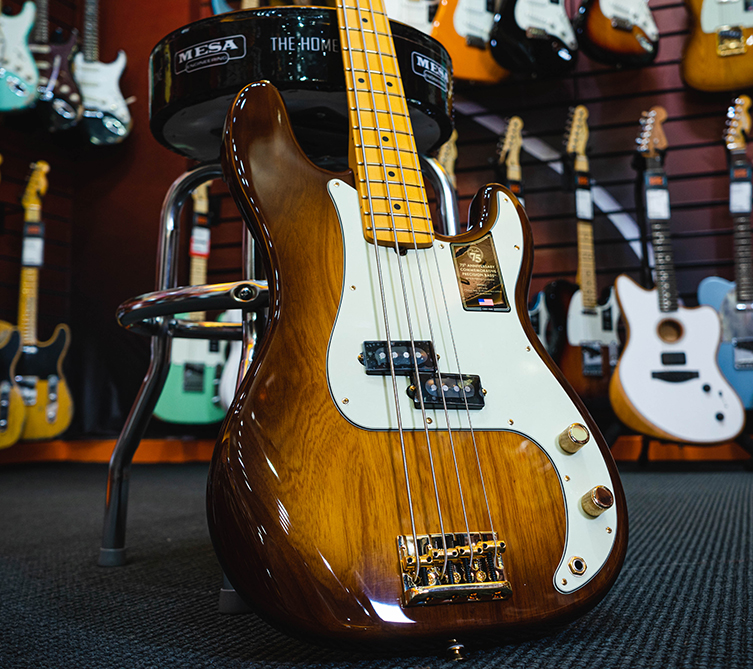
A split coil P-bass pickup has two coils, one each for a pair of strings. These two coils are wired out of phase and so produce a sound that ‘bucks the hum’, which also warms up the sound. The pickup allegedly had to be split because the coils themselves were too big to sit in line. So yes, P-bass pickups are indeed humbuckers!
Coil Taps and Coil Splits
This little resection is here to clarify and explain a common misconception amongst guitarists. You’ll see, on many guitars that are fitted with humbuckers, features like ‘coil taps’ or ‘coil splits’. These are both methods of changing the sound of the pickup by reducing the output. They do this in different ways though, and correspondingly sound different.
Here’s how it breaks down. A coil split is when a circuit cuts the signal from one of the coils of a humbucker, effectively making it a single coil pickup. It doesn’t sound exactly the same as a true single coil because the magnetic pull will be different (due to the bigger magnet) and windings will be longer and wider. Still as a feature, it’s a good way to get close to a single coil sound.
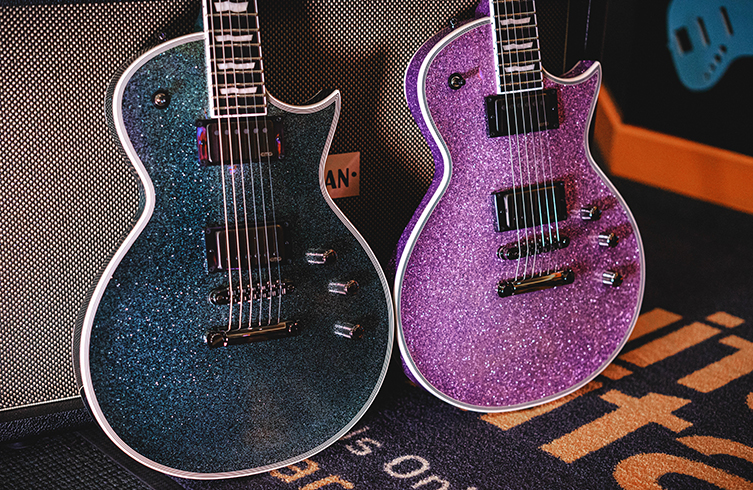
A coil tap is when the circuit halves the power of the humbucker. This results in a weaker signal that also coincidentally loses a degree of low end, making it sound reasonably like a single coil pickup. The trouble here is that a single coil pickup is not half as powerful as a humbucker. For example, if we go back to that subject of the DC resistance values, a typically single coil is maybe between 6 and 7K ohms. A PAF humbucker can actually be about the same (or only slightly more) in output, so halving the power will result in an extremely weak signal! In truth, you’d need to use a high output humbucker rated at 15 or 16k ohms in order to effectively tap it. Worth knowing!
Handwound and Scatterwound
These terms are used in the industry to differentiate boutique (small companies building by hand) pickups from pickups wound using a machine. In reality, this can be a little bit misleading. For example, the world’s biggest pickup company, Seymour Duncan, hand make all of their pickups in California. Boutique builders tend to refer to hand building and USA origins as benefits, but it’s less unusual than you might think.
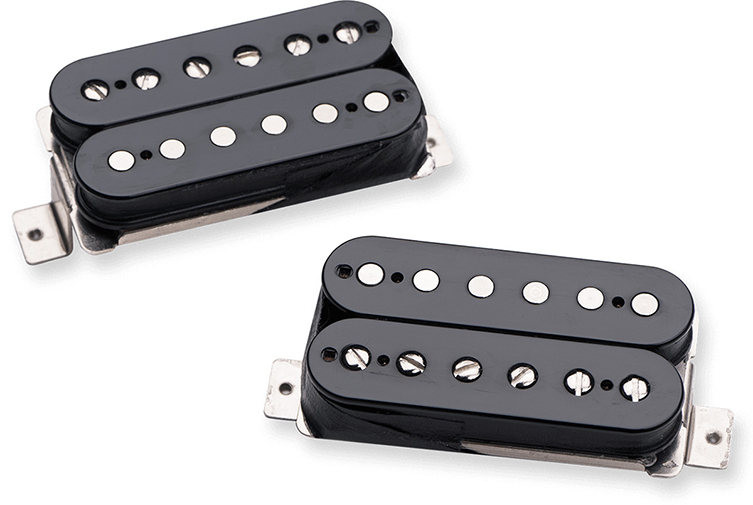
Certainly, many cheaper pickups are mass made in factories in the Far East, but that doesn’t automatically mean a lesser product. It’s all a matter of personal preference, after all! Machine-wound pickups are just that - completely made by non-humans to exactly replicable specs. Handwound pickups still use a winding machine, but a human builder is involved to determine the start, stop and general flow of the wind.
Scatterwound is when the person winding the pickup deliberately winds the coil inconsistently, so it isn’t a neat-looking job. Scatterwound pickups are reputed to sound slightly trebly due to the little amounts of air and space in there created by the scattered winds.
Piezo Pickups
Piezo pickups are found mainly on acoustic instruments, though you’ll also occasionally find piezo technology on electric guitars that have ‘acoustic’ sounds, like the PRS Custom 24 Piezo.
Piezo pickups use quartz crystals instead of magnets. There tends to be a crystal per string, and they are most often built into a transducer that sits under the bridge saddle of the acoustic guitar. Piezoelectricity grabs the energy of the pressure change (the string playing) and transforms that into an electrical signal. This then goes to the guitar’s output in the normal manner.
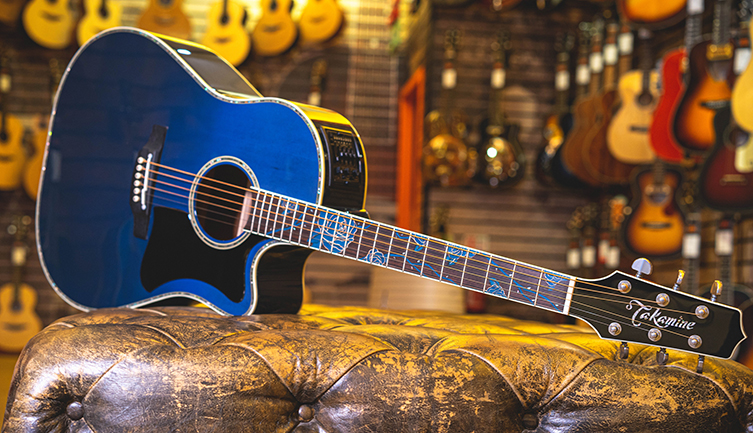
Often, piezo pickups are twinned with a small microphone located in the guitar’s soundhole to make a more complex and realistic amplified tone. Blending options for both sound sources can usually be controlled from a panel on the guitar’s side. Acoustic guitars have been notoriously difficult to amplify in a satisfactory way, though these days we have pioneering tech by the likes of Taylor and Fishman. Finally, acoustic guitarists can enjoy superb, realistic ‘plugged in’ tones.
The Ever-Expanding World of Pickups
We think this guide has covered, in general terms, all of the major types and variations of guitar pickup. It’s a big subject, and there’s always more to learn, but we hope this guide clears some of the mystique for you. New developments like the Fishman Fluence systems have changed the game again, so make sure you acquaint yourself with what’s out there! Perfect tone is not far away!










